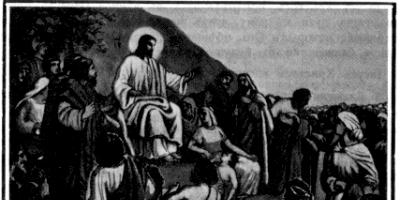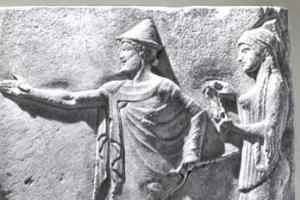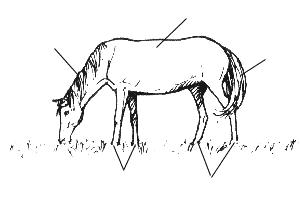Many people have probably seen or even bought trains for their children, or maybe even whole railways as toys for your beloved children.
What if you try to make a train with your own hands?
Materials for manufacturing train:
Wooden block 50*50 or 100*100 at your discretion. length from 50 cm;
Pieces of wood (we use pine, oak) details below;
Sanding paper;
Crafting tools little train:
Clamp or vice;
Set of chisels;
Grinding machine or grinding machine;
Drills + feather drill + cutters;
Pencil.
Electric drill + preferable milling machine or engraver;
Making a train
The initial stage of manufacturing a steam locomotive
Prepare wooden block size 50 * 50 mm or another larger size.
Using a compass, mark a semicircle along the end of the block on both sides.

Grind down the block using a plane until a semicircle is formed. For these purposes, it is convenient to use a clamp or a vice, but if you don’t have one. You can try to plan without them, which of course will be a little more difficult.

Sanding the part
By using grinder or grinding machine sand the semicircular block first with coarse sanding paper with 60 grit, then fine sandpaper with 180 grit.

Making a steam locomotive body
Mark the center of your block with a pencil, and using a drill bit, drill a hole along the top for the locomotive pipe.
You can use anything as a steam locomotive pipe: decorative plugs or something else, or you can, of course, turn the part on a lathe, it’s more interesting.

Making a steam locomotive cabin
Now let's start cutting out the cabin on the locomotive.
To do this we use a compass and a pencil.
We measure 1/3 of the entire length of the locomotive. and make a mark with a pencil.


Have you measured it?
Now measure 1/3 of the piece along the end of the block, and make 1 more mark.

Draw the lines for the cut, and use a hacksaw to saw off the excess part, but do not throw it away, we will need it later.
The finishing surface treatment can be done with a regular plane.

Making a roof for a steam locomotive cabin
Now, from the excess part from the previous step, we make a roof for the cabin of the locomotive.
To do this, clamp the part in a vice and use a drill, router, or engraver to drill 2 through holes as it shown on the picture.
To do this, first mark the edge of each hole should be in the center of the block.

Drilled?
Now turn the part over and again drill several holes, as shown in the photo.

It is necessary to cut off the cut part to give the part a rainbow shape.
Using a semicircular chisel, give the roof the correct shape.

Let's return to the main body of the locomotive
Clamp the cut piece in a vice or secure it to the work surface using clamps.
Take a drill with a feather drill and drill a hole 1-2 cm deep.

We continue to work on the locomotive
Using a plane, sharpen a little along the edge of the semicircle to give the locomotive a more finished look, and use glue to glue the chimney pipe, previously turned on a lathe, or something else.
We also glue the headlight, the headlight can be made from any round wooden object, for example from old wooden candlesticks etc. The edge can be turned on a lathe.

Assembling the cabin of the locomotive
We made a figurine for the roof of the locomotive earlier. Now you will need 2 more small peg bars. Prepare 2 suitable bars from them for the walls of the cabin.
Now we begin gluing the parts.
First we glue side walls, then glue the roof. For glue, use either liquid nails suitable for wood, or use an electric glue gun.


Manufacturing of trolley and wagon containers for a steam locomotive
To make cart containers, it is better to use oak bars.
Prepare such bars and drill 4 through holes in them for the axis of the pins, shown in the photo below, 2 on one side and 2 on the other.

We use wood to make wheels hardwood, the wheels must be turned on a lathe. Although you can use parts, for example, from an old wooden or plastic massager.
If the wheels of the locomotive are stationary, then you can simply glue them using wooden pins, but if you plan to make the wheels movable, you need to select a suitable metal pin, for example, you can make it from a nail and a dowel.

Glue the cart container to the body of the locomotive, and to the block machined for the car.
Speaking of the carriage. Earlier in the photo, the coupling for the carriage was shown, which was located in the cabin, and in order to subsequently connect the carriage with the locomotive, a hole must be calculated and drilled in the platform of the carriage.

Final assembly of the locomotive and carriage
Now that all the parts of the locomotive have been made, you can assemble it into a single whole.

And start painting.

The homemade train for your child is ready, you can carry it as a gift, there should be a lot of joy and emotions.
Kirill Chernov, Samara
Old parts and disassembled non-working devices are an inexhaustible storehouse of materials, parts and other food for a not lazy brain and not crooked hands. There is so much in the “” category all over the Internet, so adding it is not a sin. I bring to the attention of readers the design of the Night Light Engine.
The locomotive not only serves as a night light, but can move, moved by hand or by inertia after a push, like a child's toy car. With proper and careful assembly, all wheels rotate and the connecting rods move in the cylinders.
Unfortunately, the manufacturing process was not filmed. I'll try to explain in words.
The base of the Engine is two microcircuits. The rear one has 48 (or 40?) legs in a wide DIP housing, the front one is square with pins on four sides. The microcircuits are held together by soldering and approximately 12mm pins from copper wire with a diameter of 1 mm. The pins are soldered to the terminals on the side of the microcircuit housings.
The cabin is assembled by soldering on a frame made of copper wire with a diameter of 1 mm. In this case, it is not necessary to make a complete frame - vertical posts are enough. Chips for the Cabin are easy to find on the boards of old hard drives, modems, motherboards, etc. To remove them, you can use a carpenter's hair dryer if you don't have a soldering station. Cabin roof is a microcircuit in a wide DIP package with 24 pins.
Corner vertical racks The cabin frame protrudes downwards by approximately 7-8 mm. The distance between the posts along the longitudinal axis of the Engine is selected so that their protruding ends pass between adjacent terminals of the base microcircuit. They should be of such length that they can be slightly bent inward after the cabin is installed. The cabin must remain removable because batteries live in it.
In the front wall of the Cabin, a recess for the Boiler is machined locally. This is perhaps the most labor-intensive operation. A Dremel-like tool was used.

The Engine's boiler used to be a 1000 micron 16V electrolytic capacitor. The insides have been taken out of it. Outer surface I tried to polish it, but I didn't have enough patience. The boiler is attached to the base with black hot glue, the excess of which is removed after cooling.
The pipe is also a capacitor. Its parameters and degree of serviceability do not matter. The main thing is the appropriate size and intact external insulation.
A hole was cut in the Boiler for the Pipe of such a diameter so that during installation the external insulation of the Pipe would not be damaged - this is important. The pipe is held on with hot glue. Before installation, you need to solder wires to both of its terminals to connect to the circuit. The length is sufficient so that they extend 2-3 cm from the Boiler where the legs of the condenser were.

The hole for the flashlight (LED) must be of such a diameter that the leads of the LED with insulating tubes put on them pass through it, but the skirt of the housing does not fall through. The LED is secured with superglue, and thin wires are soldered to the terminals, extending 2-3 cm from the Boiler where the legs of the capacitor were - this is necessary for subsequent connection to the circuit.
The cylinders are made of MLT-1 resistors. The lead on one side is removed, and a hole is drilled in the contact cup exactly along the axis of the resistor. It must match longitudinal hole in the ceramic base of the resistor (it should be there by nature). The second resistor lead is retained to represent the inlet pipe and attach the Cylinder to the base. The previously bitten off pin is soldered from below to the Cylinder and the pins of the base microcircuit. The axis of the Cylinder must be directed as closely as possible to the axis of the wheel to which the Connecting Rod is attached.

The connecting rods are made of thick copper wire. One end is flattened with a hammer and rounded. A hole is drilled in the flattened end for a self-tapping screw, in which it can rotate freely. Self-tapping screws used to live in a mobile phone. In the middle wheels of the locomotive, at a distance of approximately 2 mm from the axle holes, holes are drilled into which screws are screwed in, but not tightened. Before assembly, the self-tapping screws had to be shortened so that when the wheel rotates they do not catch on the stationary parts.
It is difficult to determine the length of the connecting rod in advance. When the wheel rotates, it should not fall out of the cylinder and should not rub in the hole. It is better to round off the end of the connecting rod farthest from the wheel. The photographs show that the Connecting Rod is not straight, but slightly curved - I did not want to move the Cylinders far from the Boiler.

The locomotive wheels are made from mice. There they also worked with wheels, but not with the ones that set the ball in motion, but with the upper ones, which are under the finger. The rubber bands have been removed from the wheels, and the thickness of the plastic frames has been reduced to 2 mm, with the exception of the hubs.
Wheel axles are pieces of thick copper wire. The main thing is to drill holes in the wheels of such a diameter that the axles fit into them with interference. To attach the axes, the legs of the base microcircuit located opposite each other were removed, and brackets made of thin copper wire were soldered to the adjacent ones. Thus, we got “ears” for the axes.
The order of installation of the axes is as follows:
— press one wheel onto the axle;
— insert the axle with the free end into the “ears” on the base;
— press the second wheel onto the axle.
On the base inside the Cabin there is a flat plastic box mounted on hot glue, open at the top (I don’t remember what it was made from, most likely from a piece of cable duct). There are 2 CR2032 elements closely located in it, connected in series. Wiring - any thin wires approximately 5-6 cm long.
On top of the Boiler, in the holes, there are elements that give the product a resemblance to a steam locomotive in the eyes of amateurs (specialists, please do not worry). The shiny cylinder used to be the fuse terminal, and the black pin was the axis of the mouse wheel. All small things are secured with superglue. Small screws are attached to the front and back as bumpers: the front ones are attached to the terminals of the front base microcircuit, and the rear ones are in the grooves in the housing of the rear microcircuit. The grooves are made with an emery wheel of a Dremel-like tool.
And finally, a circuit that turns a useless Engine into a night light. The wire from the Pipe terminals must be connected to point P1, and the Boiler body must be connected to point P2.
The wire from the Pipe terminals must be connected to point P1, and the Boiler body must be connected to point P2.
There is no point in indicating the type of transistor V1. Any field switch removed from the motherboard from the processor power circuits is perfect - there are plenty of them there. V2 is an LED installed on the front side of the Boiler. The circuit, except for the batteries and the LED, is assembled by hanging, wrapped in paper and placed in the Boiler.
To turn on the light, you need to touch the Boiler and the Pipe from above with the fingers of one hand (where the body is not insulated). There is enough sensitivity, despite the fact that it is not the Pipe body that is connected to the circuit, but the leads. Now it’s clear why I insisted above on preserving external insulation Pipes and its installation without electrical contact with the Cauldron.
I got the duration of the glow after a single touch to be about 15-18 seconds. The gate insulation of modern MOSFETs is so good, and the supply voltage of the circuit is so raised against enough that it works quite well.
I highly recommend assembling the circuit on a table and making sure it works before mounting it inside the Engine. We will take for granted the need to maintain the polarity of the batteries, the LED and the correct pinout of the transistor.
If, when connecting to the battery circuit, the LED lights up immediately, then you need to connect point P1 to the source of the transistor - the LED should go out. If it does not go out, then the transistor is broken.
If the LED does not light up when you touch points P1 and P2 with the fingers of one hand, connect a resistor of approximately 1 MOhm between them. If the LED lights up, then the circuit is assembled correctly, but it is better to change the transistor to a more sensitive one.
If, when you touch points P1 and P2 with the fingers of one hand, the LED lights up, and when you remove your fingers it goes out too quickly, you can either replace the transistor or add a 100-150 pF capacitor to the circuit between the source and the gate, preferably an old tubular ceramic one.
Advanced and not lazy radio amateurs, of course, can assemble a real monovibrator with a real touch sensor - there is enough space in the Boiler and Cabin. And in this case, power supply can be simplified to one battery.
Somehow I came across a video on YouTube about a homemade craftsman who built, albeit small, but a real steam locomotive. And if this master had turned out to be someone “from over the hill,” then I might have simply saved the video for myself and that’s it. But the author turned out to be our compatriot from the city of Dzerzhinsk, which stands on the banks of the Oka River.
Although, first, I suggest you watch the video story that started it all
And the search began... for the author))) The fact is that Alexey, as they say now, is a “not a public” person. He does more work than spends his time on the Internet))) But whoever is looking for will always find! I found him in the vastness of the Runet, contacted him and asked him to tell him about himself and his hobby.
.
Alexey Evstunichev :
“I have been interested in technical modeling since childhood. Probably, like many, I started with plastic models. Over time, buying machines, he switched to more labor-intensive crafts - a turbojet engine, a model of a steam locomotive, and then this moment collecting radio controlled model IS-2 tank on a scale of 1:6. So, I don’t have any direction, and I don’t know what I’ll do next.
The locomotive is made on a scale of 1:12. Model weight 40kg. The cylinder diameter is 33mm, the piston stroke is 54mm, the operating pressure in the boiler is 6-8kg/cm. I didn’t check the traction of the locomotive, as there was no particular need, but it can pull three adults.
The time frame is half a year for preparation and a year for construction. A year is construction in your free time, slowly, as they say, with gusto. Total - 1.5 years.
If you are interested in something specifically, write, I will be happy to write.”
.
I couldn’t pass up such an offer, so I wrote several general issues and sent them to Alexey. And this is what our “interview” turned out to be like.
M.O.: Why was the steam locomotive chosen among the locomotives? What mainly influenced your choice?
Alexei: Well, well... steam, a lot of mechanisms, parts. That's the whole point. I'm not interested in assembling a model that runs on an electric motor. The more complex it is, the more effective it is. It just turned out to be a slogan)))
.
M.O.: To build such a model, you need drawings of the units. From a television interview I understood that they were purchased in the West. Question: what company/club provided them, the cost, what difficulties did you encounter with them?
Alexei: I ordered the drawings on a foreign website. Unfortunately it closed. Unfortunately I don’t remember the cost, it was a long time ago. There were no difficulties with delivery, by the way, the parcel arrived a little faster than expected. It took about a month to rework the drawing. 
.
M.O.: Model making. What tools and skills are needed home handyman To make such a model, what can be entrusted to professionals, what will be the greatest difficulties?
Alexei: Hmm... To build a model of a steam locomotive you need - lathe, drilling and milling. In my case that's all benchtop machines. Without suitable equipment it will be difficult to do anything. I can’t say that any specific skill is needed when making parts for a steam locomotive. Unless I had to master copper coinage when making a boiler.
.
M.O.: The locomotive is fire, hot water, steam. What precautions should be taken and what should you pay special attention to?
Alexei: It is necessary to pay attention to the tight and reliable connection of the parts. Some gaskets over time and from high temperature may lose their properties and at the right moment steam or hot water may escape. And this risks getting into the eyes, face and other unprotected places. Also, various parts, the tubes are heated during operation and even a light touch can cause a burn.
.
M.O.: What do you remember most from the stage of working on the model?
Alexei: Yes, in general, everything was interesting to do. From the beginning to the end.
.
M.O.: A few words to blog readers who want to build a steam engine on their country road?
Alexei: Yes, I don’t even know... It’s fun to build, fun to ride, just fun. When friends came to visit me in the summer for barbecues, we had fun. The children were so happy in general. Very interesting and positive design.
.
In the end, Alexey and I agreed that if blog readers have other questions for him, Alexey will answer them. So don’t lose the opportunity to talk to the locomotive master. Questions can be sent by email [email protected] The answers will be published as an attachment to this post.
At the end there are a couple more videos about Alexey's steam locomotive.
Testing a steam engine with compressed air
We make our own barbecue locomotive from automobile parts.
Hello, readers and subscribers of the site! Of course, making it in the form of a steam locomotive, I perfectly understood that the Internet is saturated similar products and nevertheless, after looking at many photos and videos, I decided to make my own version.
I set some requirements for my product: the locomotive should be made from parts, a minimum of commercial metal, no plastic or wood.
Tool: 2 “children’s” grinders, a screwdriver, an arc welding machine. hands, my brains, imagination and vision in all this scrap metal that lay in front of me, parts and pieces of my locomotive.
Drawings and stuff: In general, I draw well, but I already saw what was already in front of me. I didn't make any drawings or sketches.
So, I took it as a basis, like many gas cylinder and a hanging box from his five-ton truck.



I had to make decorative rivets and buy roofing bolts. Ultimately, the number of installed ones was slightly less than a thousand.

Future wheels...

One of the labor-intensive activities, as it turned out, was to tie everything together into one pile - a system of levers, pushers, rods, springs, etc. and so on.

While creating this exhibit, a question arose. Having placed the locomotive on wheels, the barbecue part was below the waist of an average person in height. And as you know kitchen countertops, as a rule, are set to a height of about 100 cm. The thinking began... How to raise the structure. Having looked at who and how makes a podium for a steam locomotive grill, I came up with my own idea, no, of course, an idea, like many others - a bridge, to make a bridge. That's how? This is my idea... I think you will understand everything in the photographs...


I even sawed off the spare tire from my car. You say it’s a pity... I don’t.


Here is such a pedestal - a bridge for the barbecue of a steam locomotive.


That seems to be all.

Length 2500, height 1600, width 600.
And I decided to paint it over with varnish... Now, since I don’t use it as a barbecue... Sorry...
Here I am attaching a video... Good luck to everyone in your creativity!








